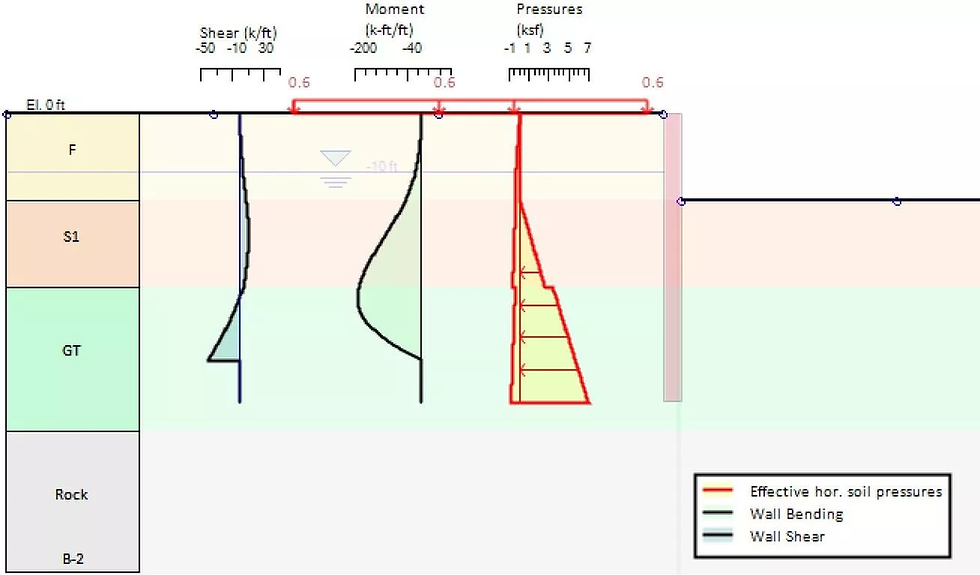Passive Pressures in Deep Excavations
Passive Pressures - What is it and Why?
When we excavate on one side of a retaining wall an unbalanced load condition is created. As it is very obvious, the retained side wants to move into the recently excavated zone. However, we engineers boldly introduce our retaining walls in the middle to take care of the unbalance.
At a closer glance what is happening is this:
a) The excavated zone gets unloaded, the zone above subgrade is removed and therefore there is zero lateral pressure on the recentrly excavated depth.
b) As a result the retained soil, which is initially at an "At-rest" state starts moving towards the excavation, while the soil on the excavated side gets further compressed into the excavation.
c) The result of this movement on the excavation side is an increase in the resisting lateral earth pressures from the theoretical initial state for the current excavation level.
d) If this lateral movement keeps increasing, the lateral lateral earth pressure reaches a maximum value, beyond which there is no further increase in lateral pressure. Essentially, this condition is a limit state or in other words a failure condition. This means that the soil has fully mobilized its strength.
This condition, if left uncontrolled can be unsafe, partly because passive earth pressures take place at large displacements.
As all effective horizontal stresses, passive earth pressures are defined as a ratio of the effective vertical stress times a coefficient of lateral pressure. For "passive" conditions with zero wall friction and a horizontal ground surface, this coefficient is typically defined as:
Kp = [1+Sin(friction angle)]/[1-sin(friction angle)]
Lateral passive earth pressures can be modified to include wall friction, seismic effects, and surface inclination.

Fig. Cantilever Excavation - Active and Passive Pressures Diagrams - DeepEX Software
DeepEX Software can Calculate all Soil Pressure Types for Deep Excavations
Active/Passive, At-Rest, Peck Apparent, FHWA Apparent, Custom Trapezoidal, AASHTO 17 and more!
Do you have to include Passive Pressures for Your Design?
Engineers typically design gravity walls for passive earth pressures and then apply a safety factor in the overall wall design. Over many years this practice has proven safe given that the retaining wall is allowed to experience small lateral displacements and that the passive earth pressure is used to determine a safe wall embedment that is later multiplied by a safety factor. In Eurocode 7 the toe embedment safety factor is incorporated in soil strength reduction factors. Another approach is to divide passive pressures by a safety factor when designing a retaining wall.
Solutions for Geotechnical Engineering Professionals:

DeepEX: Deep Excavations Design Software

DeepFND: Pile Foundations Design Software

HelixPile Helical Piles Design Software


